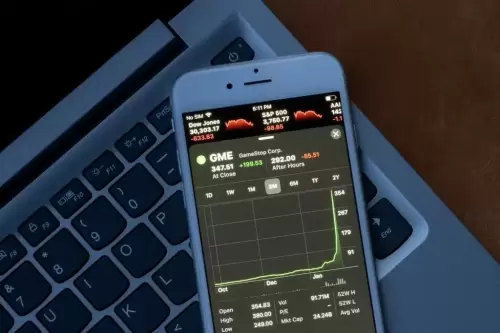 |
|
 |
|
 |
|
 |
|
 |
|
 |
|
 |
|
 |
|
 |
|
 |
|
 |
|
 |
|
 |
|
 |
|
 |
|
暗号通貨のニュース記事
Operando Analysis of Transition Metal (TM) Deposition in Nickel-Manganese-Cobalt (NMC) Lithium-Ion Batteries (LIBs)
2025/05/01 22:43

A recent article in Small takes a detailed look at the operando analysis of transition metal (TM) deposition in nickel-manganese-cobalt (NMC) lithium-ion batteries (LIBs) using laboratory-based confocal micro-X-ray fluorescence (CMXRF) spectroscopy.
This non-destructive technique enables real-time elemental imaging at battery interfaces, providing critical insight into degradation mechanisms that affect battery performance and lifespan, especially in electric vehicles (EVs) and portable electronics.
Image Credit: asharkyu/Shutterstock.com
Why CMXRF Matters
CMXRF spectroscopy is a powerful analytical method that delivers spatially resolved, quantitative elemental data. By merging X-ray fluorescence with confocal microscopy, it supports depth profiling and 3D elemental mapping, capabilities particularly well-suited to studying complex, layered systems like LIBs.
LIBs are widely adopted due to their high energy density, efficiency, and strong cycling performance. Among cathode materials, NMC oxides stand out for their excellent electrochemical behavior.
Yet, they face challenges such as structural degradation during deep lithium extraction and TM dissolution—factors that contribute to capacity loss and shorter lifespans. CMXRF allows researchers to monitor these changes in real time, inside functioning cells, without damaging the sample. That makes it a valuable tool for exploring how internal chemical and structural shifts influence battery safety, stability, and efficiency over time.
Innovative Cell Design for Operando Measurements
In this study, researchers used CMXRF to track TM behavior—specifically manganese (Mn), nickel (Ni), and cobalt (Co)—within NMC batteries over an extended cycling period of more than 10,600 cycles. They aimed to monitor how these metals migrate toward the solid electrolyte interphase (SEI) and carbon anode, all without dismantling the battery.
They customized standard CR2032 coin cells by integrating a highly oriented pyrolytic graphite (HOPG) window, enabling photon-in/photon-out measurements while preserving the cell’s original architecture. This design allowed them to distinguish between the NMC cathode and trace metal deposits in nearby components, like the separator and anode.
They carried out systematic depth profiling by gradually shifting the probing volume through different battery layers, capturing dynamic changes in elemental distribution. Over six weeks, they performed 60 measurements under various cycling conditions, using spectral deconvolution software to quantify TM concentrations at multiple depths. The result: a detailed picture of how metals migrate and contribute to performance degradation over time.
Outcomes: Transition Metal Migration and Its Implications
The operando CMXRF measurements showed substantial TM migration during battery cycling, with Mn fluorescence intensity increasing fourfold in the carbon anode after approximately 200 cycles (three weeks).
Quantitative analysis indicated that Mn mass deposition reached 23 µg cm⁻², corresponding to about 1.3 % of the cathode’s total Mn content, demonstrating significant elemental transfer from the NMC cathode to the anode. This migration was closely linked to capacity fade and overall performance degradation.
The study also observed gaps forming between the separator and carbon anode due to gas bubble accumulation, leading to layer delamination. This compromised stack integrity and likely limited further TM deposition. Interestingly, Mn depth profiles plateaued after ~200 cycles, suggesting a saturation point or physical barrier to continued migration.
Additionally, the authors confirmed the heterogeneity of TM deposition, with higher concentrations in areas where stack pressure was maintained, highlighting the influence of mechanical factors on elemental distribution. The ability to perform real-time, non-destructive measurements proved critical in capturing these dynamic processes.
What This Means for Battery Innovation
The ability to monitor elemental migration in real time has major implications for battery development. CMXRF and related techniques can lead to smarter diagnostics, improved quality control, and longer-lasting battery designs.
For instance, CMXRF can verify material composition during manufacturing or monitor changes during operation, which are vital capabilities for developing more responsive battery management systems.
Understanding how and where metals move helps engineers pinpoint weaknesses and design batteries with better structural stability and longer usable lives. There's also potential for integrating CMXRF into production workflows as a diagnostic tool to catch defects and optimize internal configurations before batteries leave the factory.
Download your PDF copy now!
Looking Ahead: Smarter, More Resilient Batteries
This study marks a significant step forward in LIB research, highlighting the value of operando CMXRF spectroscopy for tracking transition metal behavior during battery use. These real-time insights into elemental migration help researchers understand—and eventually mitigate—degradation processes that limit performance and longevity.
Going forward, enhancing spatial resolution, exploring a wider range of cycling conditions, and pairing CMXRF with other operando tools like X-ray absorption spectroscopy will deepen our understanding of chemical changes at the atomic level. Together, these approaches will support the development of lithium-ion batteries that are not just more efficient, but also more durable and reliable.
Journal Reference
Mantouvalou, I., et al. Operando Measurement of
免責事項:info@kdj.com
提供される情報は取引に関するアドバイスではありません。 kdj.com は、この記事で提供される情報に基づいて行われた投資に対して一切の責任を負いません。暗号通貨は変動性が高いため、十分な調査を行った上で慎重に投資することを強くお勧めします。
このウェブサイトで使用されているコンテンツが著作権を侵害していると思われる場合は、直ちに当社 (info@kdj.com) までご連絡ください。速やかに削除させていただきます。
-

-

- 新しいウォレットは大規模な取引を行い、USDCで2985万ドルを引き出しました
- 2025-06-14 03:55:12
- 暗号通貨市場は最近、大規模な取引を行った新しい財布の出現にショックを受けました。
-

-

-

-

-

-

-




























































